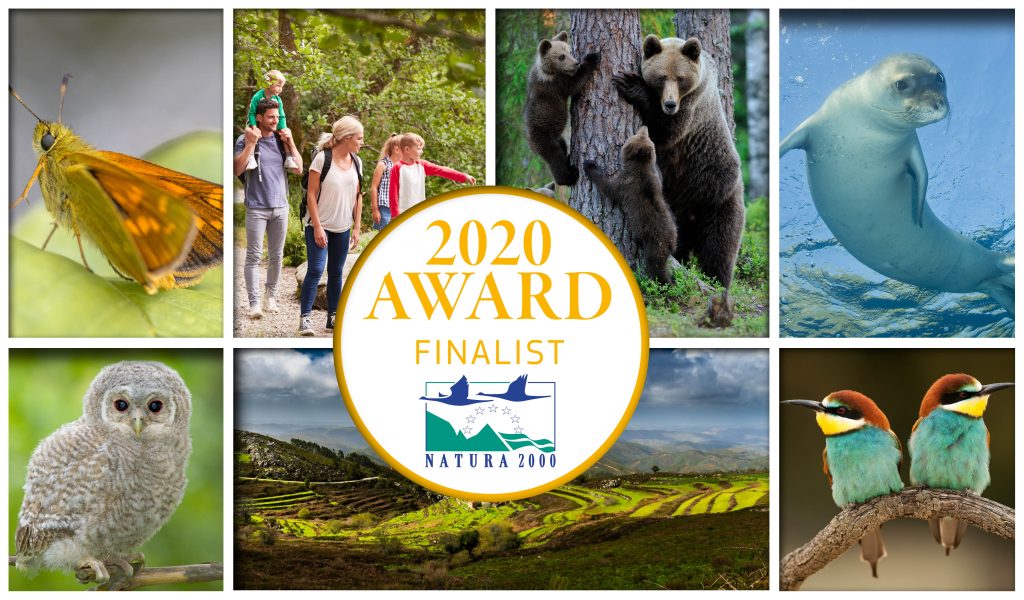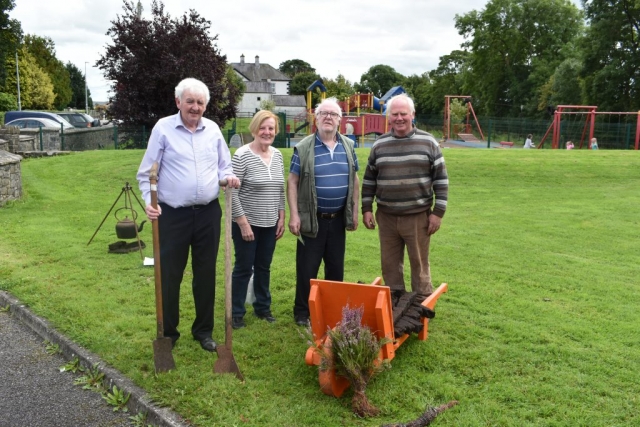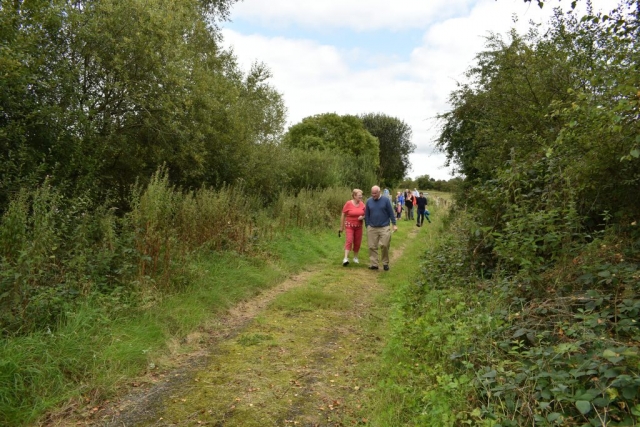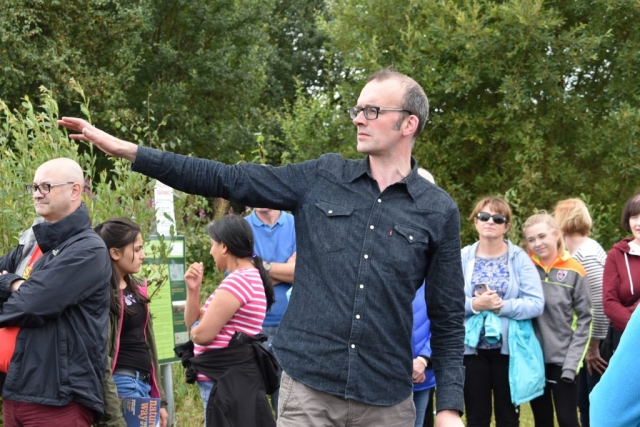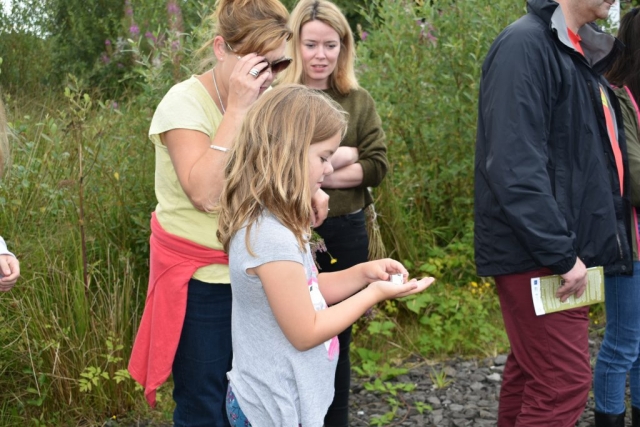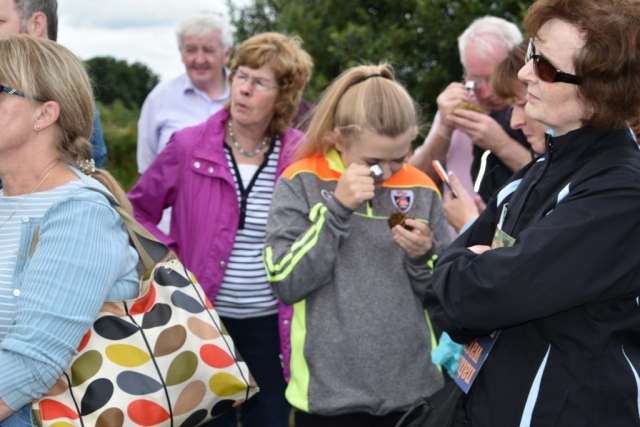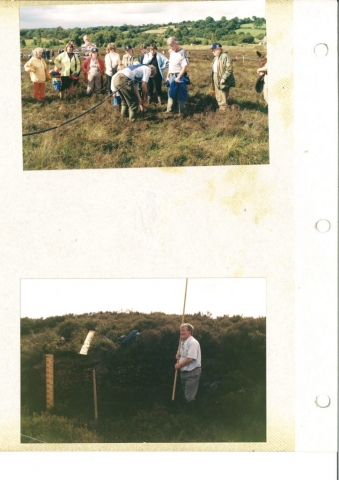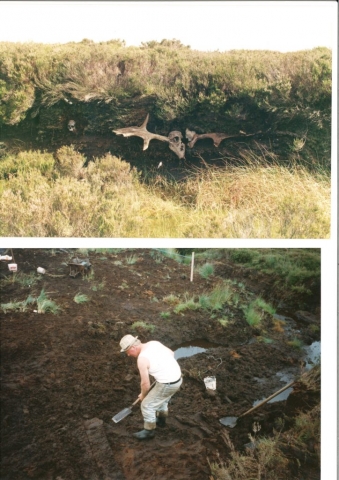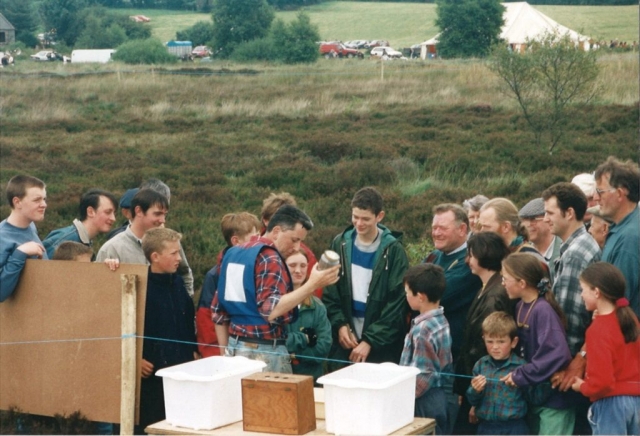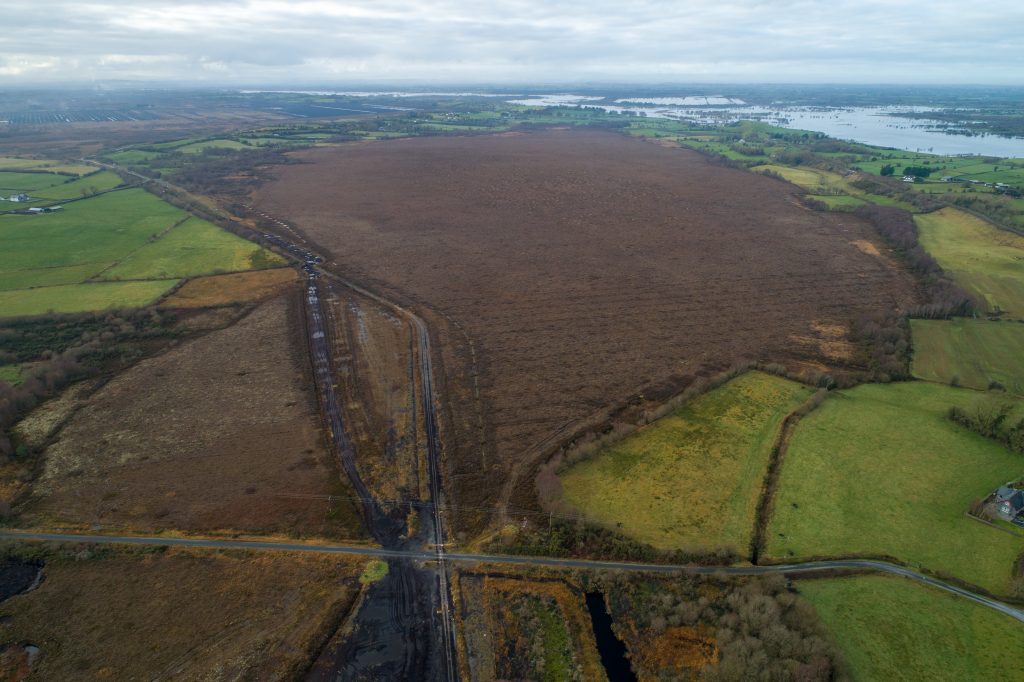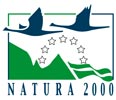On World Peatlands Day 2020 (02 June), ‘The Living Bog’ Irish raised bog restoration project, co-funded by the NPWS of the Department of Housing, Heritage & Local Government and the EU’s LIFE programme was nominated for one of Europe’s top environmental awards.
The Living Bog, which commenced in 2016 and finishes in December 2021, was among 27 international finalists for the European Commission’s Natura 2000 Awards.
The awards recognise excellence in the management of Natura 2000 sites. The work of Living Bog Public Awareness Manager Ronan Casey with an impressive public awareness campaign and his work with local community groups attached to project sites, saw The Living Bog is nominated in the ‘Communications’ category.
Ronan’s work on communicating the importance of raised bogs and Natura 2000 sites and the work in the local community and the involvement of community groups and individuals – including former turf cutters – in project actions was recognised by the European Union’s environmental bodies as being particularly impressive.

Ronan Casey of The Living Bog project leading an educational tour on Clara Bog SAC, Co Offaly. Pic: Emily Toner, National Geographic.
A high-level jury decided on five winners, but from the finalists the public will also chooses its winner: The Citizens’ Award. The Living Bog finished third in this area.
Since the Natura 2000 awards started in 2014, there have been no Irish winners in any category.
The Living Bog was delighted to have been nominated.
Congratulating the project team on the nomination, the then Minister with responsibility for Heritage, Josepha Madigan TD, commented: “I am delighted that the work of the Living Bog with local communities has been recognised with its nomination for a Natura 2000 Award. This project aims to restore raised bog across 12 raised bog Special Areas of Conservation (SACs) across seven counties. Encouraging local community involvement is a significant element of the project. I wish to congratulate Ronan and the project team on its outstanding efforts to promote awareness of peatland restoration in the local and wider community.”

The Living Bog has undertaken an immersive communication and community drive since 2016, with Public Awareness Manager Ronan Casey pictured here on Clara Bog lending a hand to a tour. Pic: Emily Toner
The project is funded by the EU LIFE 2014-2020 Nature and Biodiversity Fund, with the National Parks and Wildlife Service at the Department of Housing, Heritage and Local Government the co-ordinating beneficiary. The project is undertaken by a five-person project team located in the heart of the Irish midlands ‘peat district’ in Mullingar with many local contractors from the midlands region carrying out works throughout seven counties and also lending assistance in areas such as hydrology and ecology. The economic spin-off from the project was estimated to have been over €3m to the midlands region.
The aim of the project is to improve the conservation status of the priority habitat Active Raised Bog (EU Habitat Code 7110). This is being achieved by drain blocking with peat and plastic dams, barrier dam construction and other restoration and improvement measures. In total, almost 200km of drains have been blocked by the project with c.10,000 dams installed.
It is the project’s work in communities and communicating the importance of peatlands and the Natura 2000 Network that has been recognised by the EU. An active programme of community events, from walks and talks to children’s nature camps saw the Living Bog project establish a foothold in local communities. Community volunteers gave up many hours of their time to assist at project events and also to help on many project actions. This was further supported by an intensive social media campaign and web promotional work. A major schools outreach project was also launched. Over 100 schools were involved and children were encouraged to learn more about peatlands and bogs and espouse the benefits of restoration at home and socially.
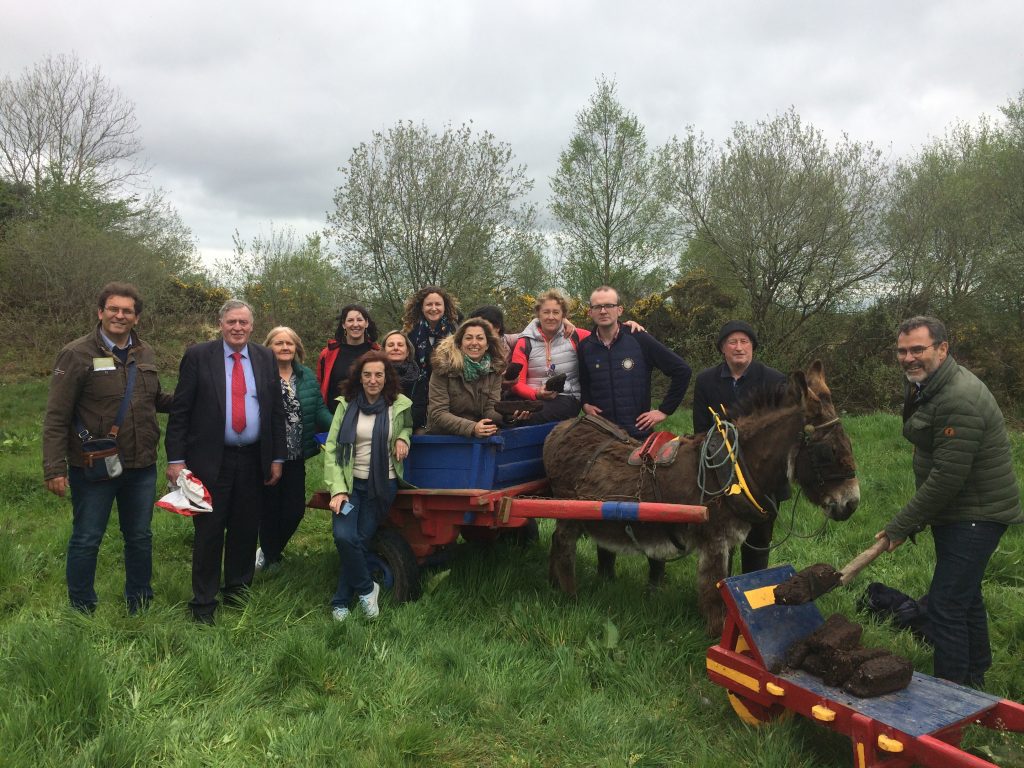
An educational visit to Carrownagappul Bog SAC (aka Galway’s Living Bog) in Mountbellew with former turf cutters turned restoration champions Paul Connaughton and Tommy Cunningham pictured with Living Bog Public Awareness Manager Ronan Casey
Working with local community groups, the project is currently delivering or set to deliver amenity and educational facilities, including boardwalks, walking routes and educational parks, at five locations – pending planning permission decisions for a number of sites. It is anticipated that these developments will generate local health, social and economic benefits.
Notes for Editors:
The bogs involved in The Living Bog project (www.raisedbogs.ie) : Ardagullion Bog SAC, Co. Longford; Carrowbehy Bog SAC, Gorthaganny, Co. Roscommon; Derrinea Bog SAC, Co. Roscommon; Clara Bog SAC, Moyclare Bog SAC, Mongan Bog SAC, Raheenmore Bog SAC, Sharavogue Bog SAC, and Ferbane Bog SAC, all Co. Offaly; Garriskil Bog SAC, Co. Westmeath; Killyconny Bog SAC, Mullagh Co. Cavan / Co. Meath; and Carrownagappul Bog SAC, Mountbellew, Co. Galway.
The project aims to re-create the eco-hydrological conditions on these sites to consolidate over 750 ha of Active Raised Bog within an overall area of almost 2,700 ha of raised bog habitat improved. Restoration works have been completed on ten of the 12 project sites and are being monitored closely to identify site response in relation to hydrology, ecology and water chemistry. To date, results have been positive, especially in the area of cutover restoration.

On 12 raised bogs, local contractors have blocked 200 km of drains with over 10,000 peat dams. Community involvement was another big aspect of the project and it is for this they have been nominated for a Natura 2000 Award
Cutovers are where peat was extracted from the raised bogs in the past, and novel restoration techniques have seen many rare flora and fauna re-populate the sites relatively quickly after restoration works have taken place.
Active raised bogs once covered over 766,000 acres of the Irish midlands (Hammond, 1979). Turf extraction and peat harvesting on an industrial scale along with other activities have, however, stripped much of this away, to the extent that approx. 9% of the original raised bog resource remains in protected sites with less than 1% (1,639 ha) of active raised bog left nationally.
To endeavor to ensure the protection of the remaining peatlands, 53 raised bog sites were nominated for designation as SAC/Natura 2000 sites in the late 1990s/early 2000s.
The Natura 2000 Awards
The Natura 2000 Award is designed to reward excellence in the management of Natura 2000 sites (Special Areas of Conservation and Special Protection Areas) and showcase the added value of the network. It pays tribute to all those who work to make Natura 2000 a success whilst drawing public attention to its substantial achievements.
The Natura 2000 network works to ensure the long-term survival of Europe’s most valuable and threatened species and habitats, and is the centre piece of the EU’s nature and biodiversity policy. It is currently made up of over 27,800 sites. In total, it covers almost a fifth of Europe’s land area and almost 10% of the EU marine areas, making it the largest coordinated network of conservation areas anywhere in the world.
In 2014, the European Commission launched the annual European Natura 2000 Awards; the aim of which was to demonstrate what the network is, what it does to preserve Europe’s biodiversity, and how it benefits us all. The finalists chosen represent the efforts by Europeans to protect and restore nature in the EU – through conservation actions on the ground, by raising awareness about species and habitats, by highlighting the socio-economic benefits of the Natura 2000 network and by bringing stakeholders together. To date, no Irish project has won an award at the award ceremonies, held each year in Brussels.
Further Info:
The Living Bog: www.raisedbogs.ie and @LIFEraisedbogs on Facebook and Twitter.
Natura 2000 Awards: https://ec.europa.eu/environment/nature/natura2000/awards/index_en.htm
National Parks and Wildlife Service: www.npws.ie
LIFE Programme: https://ec.europa.eu/easme/en/life
Situated south of the historic Offaly town of Birr, Sharavogue Bog is one of Ireland’s best preserved raised bogs. Sharavogue Bog is also one of the few remaining raised bogs in Ireland situated on a floodplain. It has a well-developed dome of uncut peat which is long and relatively narrow. Restoration prospects here are very good.
Like our Westmeath project site Garriskill, it is bounded by a decommissioned public rail line on one side (the Birr-Roscrea line, see History section) and a river on the other – and it boasts a connection to no less a person than Saint Patrick! Turf cutting here never really reached the levels it did elsewhere in Offaly, though a large section to the north of the bog was extensively cut in the early 1900’s. But the main active raised body of the bog remains and its good condition is testament to two local men who worked together to save the bog from heavy machinery harvesting in the 1990’s. Drainage channels were dug across the bog sometime in the early 1990’s and only for the actions of Mr Liam Egan and Mr Patrick Headon, Sharavogue could have been lost forever.
The total site covers 223.43 ha and is situated between the River Little Brosna and an elevated ridge of Carboniferous limestone. It includes 137 ha of uncut raised bog and 86 ha of surrounding areas which include cutover bog, wet grassland, semi-natural woodland, and an area of wet lagg vegetation in the cutover along the eastern margin of the bog. The eastern edge is bounded by a disused railway embankment, which once linked Birr to Roscrea, and the western edge by the Little River Brosna.
Restoration works here were undertaken by contractors in 2021 with over 400 dams installed. These have helped re-wet the bog, increase the areas of Active Living Raised Bog, store carbon, clean water, increase biodiversity and generally make this impressive bog an even better place than it already was.
The bog is underlain by low permeability limestone and limestone till.
The site is a Special Area of Conservation (SAC) selected for the following habitats and/or species listed on Annex I / II of the E.U. Habitats Directive (* = priority; numbers in brackets are Natura 2000 codes):
[7110] Raised Bog (Active)*
[7120] Degraded Raised Bog
[7150] Rhynchosporion Vegetation
Active Raised Bog (ARB) comprises areas of high bog that are wet and actively peat-forming, where the percentage cover of bog mosses (Sphagnum spp.) is high, and where some or all of the following features occur: hummocks, pools, wet flats, Sphagnum lawns, flushes and soaks.
The LIFE team will publish its results in late 2021, but the most recent studies from 2011 and 2002 indicated that ARB cover on Sharavogue is high, over 25.8ha of the high bog area, mainly in the central and southern part of the dome. With restoration works to be carried out on site between 2017 – 2020 we aim to increase this to over 40h on the high bog. Prospects for restoration here are positive.
Degraded Raised Bog (DRB) corresponds to those areas of high bog where the hydrology has been adversely affected by peat-cutting, drainage and other land use activities, but which are capable of regeneration to ARB within 30 years.
The area of (DRB) on the High Bog was modelled as 29.5ha (by Fernandez et al. 2012), mainly on the southern dome but it lacks many extensive areas of quaking hummock/hollow/pools as a result of long-term drying out caused by peat cutting, burning and marginal and river drainage.
Many of the drains inserted on the high bog in the 90’s and on the south eastern area of the cutover were dammed in the late 1990s as part of an E.U. Cohesion project to restore peat forming conditions. That project was successful in halting and reversing, to some extent, the decline of ARB on the site.
The Living Bog built on this work, restoring and increasing the area of Active Raised Bog by almost twice its current amount. In time, our restoration work will lead to an even bigger increase…

Cissy Tighe demonstrating Beesoms, or heather brushes during one of the original ‘Day on the Bog’ events on Killyconny Bog in the 1990’s.
Killyconny Bog was once upon a (recent) time home to a truly Irish occasion: the Mullagh ‘Day on the Bog’.
You can read more about it HERE in this archived IRISH TIMES article (please note: A subscription may be needed to read the article in full)
With thanks to local man Jim Smith of Rantavan, Mullagh, who has had a great interest in preserving Killyconny raised bog for many years, we present rare and restored footage of three of the great ‘Mullagh Bog Day’ community events, from 1997, 1998 and 1999.
The days were organised by the St Kilian Heritage Trust. The aim was to recreate the part the bog played in rural life and at the same time to heighten awareness of the importance of conserving as many as possible of our bogs for future generations. Each featured a packed programme of events, including:
• Guided tours of the bog
• Flora and Fauna talks
• Pond-dipping and Wildlife
• Exhibition of turf-cutting and turf-cutting competition
• Exhibitions of tools used on the bog – from the slean to barrows to bog crafts to heather ‘beesoms’ (brushes)
• Mini-farm
• Traditional music and song
• Story-telling and comedy
• Irish dancing
• Refreshments, and much more…
We are very lucky that Jim filmed these events and the restored footage is here for generations to enjoy. If you see a familiar face and can help us identify everybody in the videos, please drop us a line, email ronan.casey@npws.gov.ie or phone 076 1002627 and we’ll endeavor to update the credits. The videos are property of Jim Smith. Feel free to share on social media to give the Diaspora of Cavan and Meath a great window to our recent past.
1997
1997 was the first year of the Bog Day and it was a historic one for Cavan, as they beat Derry to become Ulster Champions! The bog event was great craic, as Jim’s video below details, and later on in the video, some of the Cavan team come to Mullagh with the trophy, and wild celebrations ensue on both the bog and on the streets!
1998
1998 saw the event grow, and it was a huge success with a big crowd enjoying the very best Mullagh had to offer. There was plenty to see and do, and the importance of preserving the bog and restoring it became a reality and was much-talked about locally. 1998 was an historic year too as the bog was officially designated an Special Area of Conservation after Michael D Higgins had signed the Habitats Directive a year earlier.
1999
1999 was another great year for the Mullagh Bog Day, as Jim’s video shows the community really getting behind it. Sadly, despite the interest and the good weather the event was blessed with for its three days, it was to be the last staging of the event… for now…
2017
The event was resurrected by a committee featuring members of the LIFE team and St Kilian’s Heritage Council in 2017, when a smaller-scale staging took place on Saturday August 26, as part of National Heritage Week. This successful event will pave the way for bigger community events on the bog in the future.
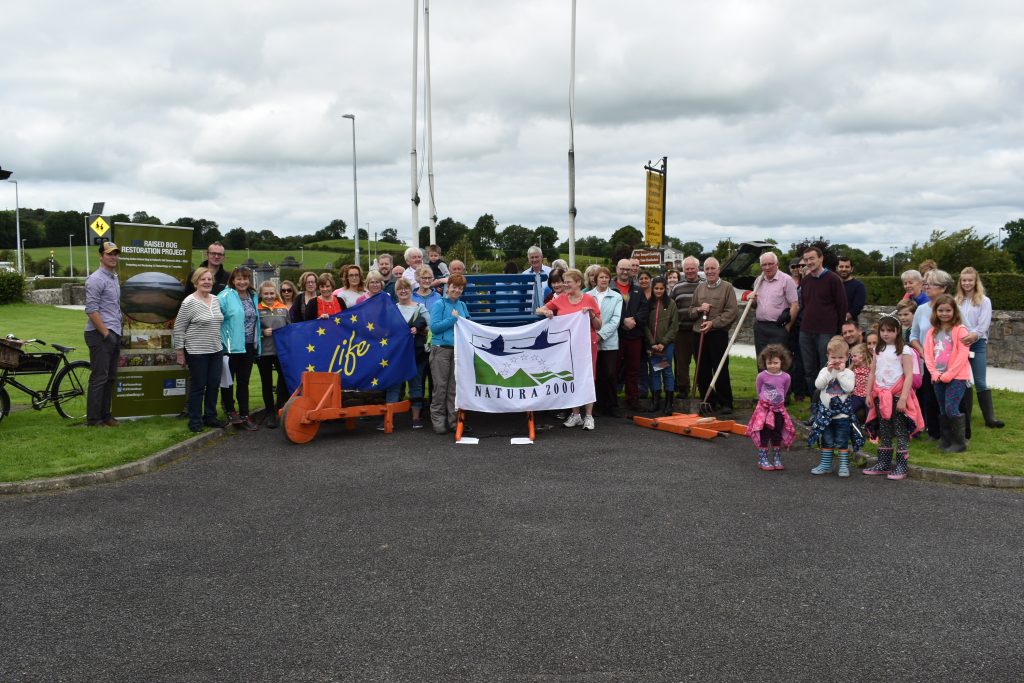
A section of the large crowd which enjoyed a walk and talk on Killyconny Bog SAC during our ‘Mullagh Day on the Bog’ event for Heritage Week 2017
As reported on our BOG BLOG page, the event attracted a large crowd, with all aspects of the bog covered, from turf-cutting days to today’s restoration plans.
The day commenced with old turf-cutting equipment displays and talks at St Kilian’s Heritage Centre in Mullagh town, honouring the turf cutting past of the bog. A number of local elders spoke about the days on the bog before the large crowd was bussed out to Killyconny Bog SAC for a walk and talk by Ronan Casey and Jack McGauley. There was over 50 in attendance and more left waiting at the Centre such was demand! The crowds were not just local, with tourists from Asia, Great Britain and America, plus people from Derry, Dublin, Kells, Navan and Drogheda as well as local media (Anglo Celt) and Cavan County Council reps all enjoying an informative walk and talk along the edge of Killyconny Bog SAC. It is hoped the event will be built on for next year and there is considerable local community enthusiasm and involvement for it to grow.
Check out the photo gallery from the day here:
PICTURES OF OLD
With thanks to local man Brendan Clarke, here are some photographic memories of the original ‘Day on the Bog’ events, mainly 1998.

Locals in wonder as an ecologist talks them through the story of raised bogs during a Killyconny Day on the Bog in the 1990’s
Mongan Bog is perhaps one of the most significant bogs not just in Ireland or indeed Europe, but in the entire world. Situated beside the monastery of Clonmacnoise, one of the world’s most historic sacred sites, the bog has dazzled and captivated visitors for many centuries. Pilgrims travelling from Europe to Clonmacnoise along the ancient ‘Pilgrims Road’ (which runs alongside and overlooks the bog) would have been amazed at this domed peatland as nothing similar would have been found elsewhere in Europe at the time.
Fast forward many hundreds of years later to the 1970’s, and Mongan Bog would prove to be the inspiration behind a Dutch-Irish movement that went on to save many Irish bogs. It is part-owned by An Taisce, a charity working to preserve and protect Ireland’s natural and built heritage.
As one of the best-preserved raised bogs in Western Europe, it continues to amaze and inspire today.

It is thought that Mongan Bog SAC is over 9,000 years old, forming in a basin between two east-west trending eskers. The deep peat of today originated in a shallow lake basin and its elevated dome grew upwards due to the accumulation of peat over time. At first glance Mongan Bog might seem a little flat and featureless but in reality the bog has that distinctly irregular terrain typical to active raised bogs with patches of varying wetness and an abundance of open water pools.
Mongan Bog SAC is located just over 1.5km from the Clonmacnoise National Monument and the mighty River Shannon, and 12km south of Athlone. It is recognised internationally as being one of the last remaining (mostly) intact midlands raised bogs in Ireland.
If you look at the entire length of the Shannon from the air, you will also find that Mongan is one of the last relatively intact bogs along the river, which has been prone to serious flooding in recent years, much of which can be attributed to the loss of these natural sponges along its length.

In this 20km x 12km aeriel view from Bing Maps, Mongan Bog (centre) stands isolated amid a network of strip-mined bogs, the peat from which was used for power plants such at Shannonbridge and Ferbane. Another of our project sites, Ferbane Bog SAC is to the bottom right of the photo (Endrim).
Mongan Bog covers an area of over 205 hectares, and the LIFE project aims to improve a considerable amount of this over the next five years. An Taisce own some 119 hectares of this wonderful site.
A wet living bog with Active Raised Bog covering almost 40% of the high bog area, Mongan is flush with classic hummock and pool formations over a large proportion of the surface. There is a high density of sphagnum mosses – with cover reaching almost 90% in some places. It’s central sphagnum lawn is alive and well and, like all good raised bogs, the higher you go on Mongan, the wetter it gets. Degraded high bog covers 60% of the high bog area.
Some of the hummocks on Mongan are over 150cm high and – according to a Trinity College study in 1987 – they hold a midlands record for raised bog hummocks!
The hummocks are home to a wide variety of plant-life, including ling heather, cross-leaved heath, bog rosemary, cranberry, bog cotton, round-leaved sundew and bog asphodel.

Mongan has several features of special zoological interest and although a classic midland bog, it has some features and species of western raised bogs.
Scenically Mongan is part of area landscape rich in intact natural features and also rich in biodiversity supporting important habitats (Shannon Callows, eskers, limestone pavement) which enhances its importance even more.
In ancient times Mongan would have been one of the smaller raised bogs in the area, and today we estimate that 40.5% of the original dome remains. But it was equally as important as its Shannonside neighbours, soaking up floodwater and supporting an incredible array of life. But the bogs of this part of Offaly/Westmeath have seen better days and the majority of them – especially the bigger bogs – have been damaged by human interference, especially since the 1960’s. Mongan used to be the smallest, but now it holds the greatest area of active raised bog in this area.
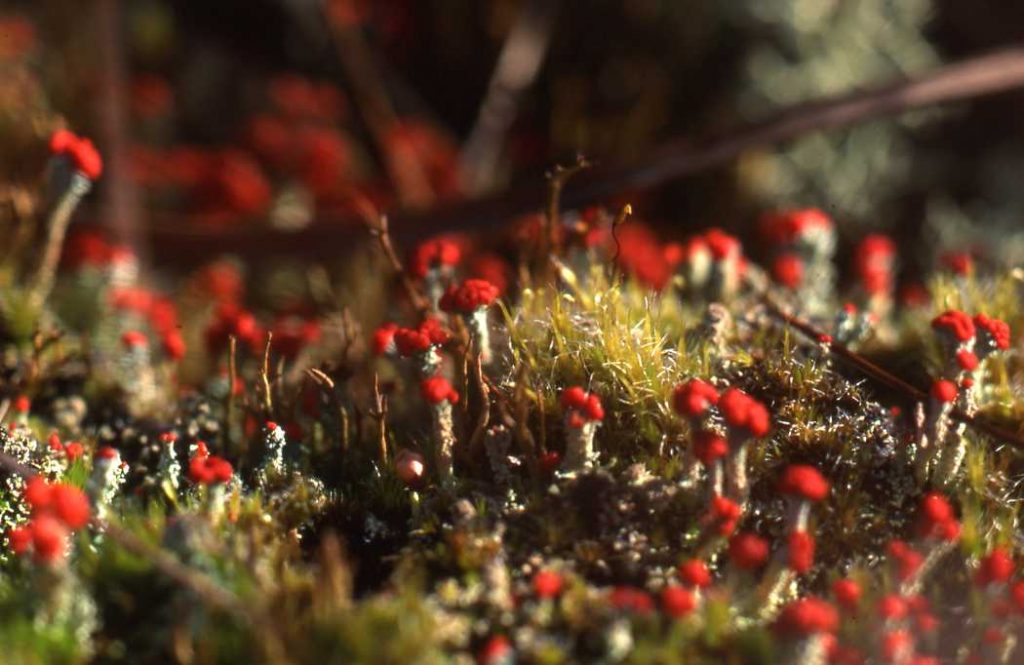
Mongan’s lowest strata are thought to be among the oldest in Ireland. Due to this, it remains as a tangible link to the past, as little has changed for the bog since the time of the monastic settlement.
The preservation of this bog is increasingly important it is estimated that less than 0.5% of the original area of raised bog in Ireland is supporting active peat forming raised bog habitat. They are our oldest surviving ecosystems, and it is our duty to keep what’s left alive.
The Living Bog project will, in some way, restore a little piece of this iconic Irish landscape to leave a large legacy for future generations.
We started restoring it in September 2018 with works continuing until December 2018. After almost 4 months, we installed almost 400 dams, with a small number left to complete in 2021.
COMPARISON – 1970’s and 2010’s
Mongan Bog is perhaps one of the last surviving raised bogs along the ENTIRE length of the River Shannon. This adds hugely to its significance. Of the 310,000 hectares (750,000 acres) of raised bogs of Ireland mapped in the early 1800’s, just 1% is said to be active, living, raised bog.
The majority of damage done to our bogs happened post-mechanisation. the machines came onto Irish bogs in the 1940’s but it was from the 1970’s on that the pace of mechanisation really took off, and the majority of raised bog in Ireland was lost in the last 40 years.
This is clearly visable when you compare these aerial images of Mongan Bog and its surrounding, neighbouring bogs from the early 1970’s and those of Bing Maps, taken in the early 2010’s.
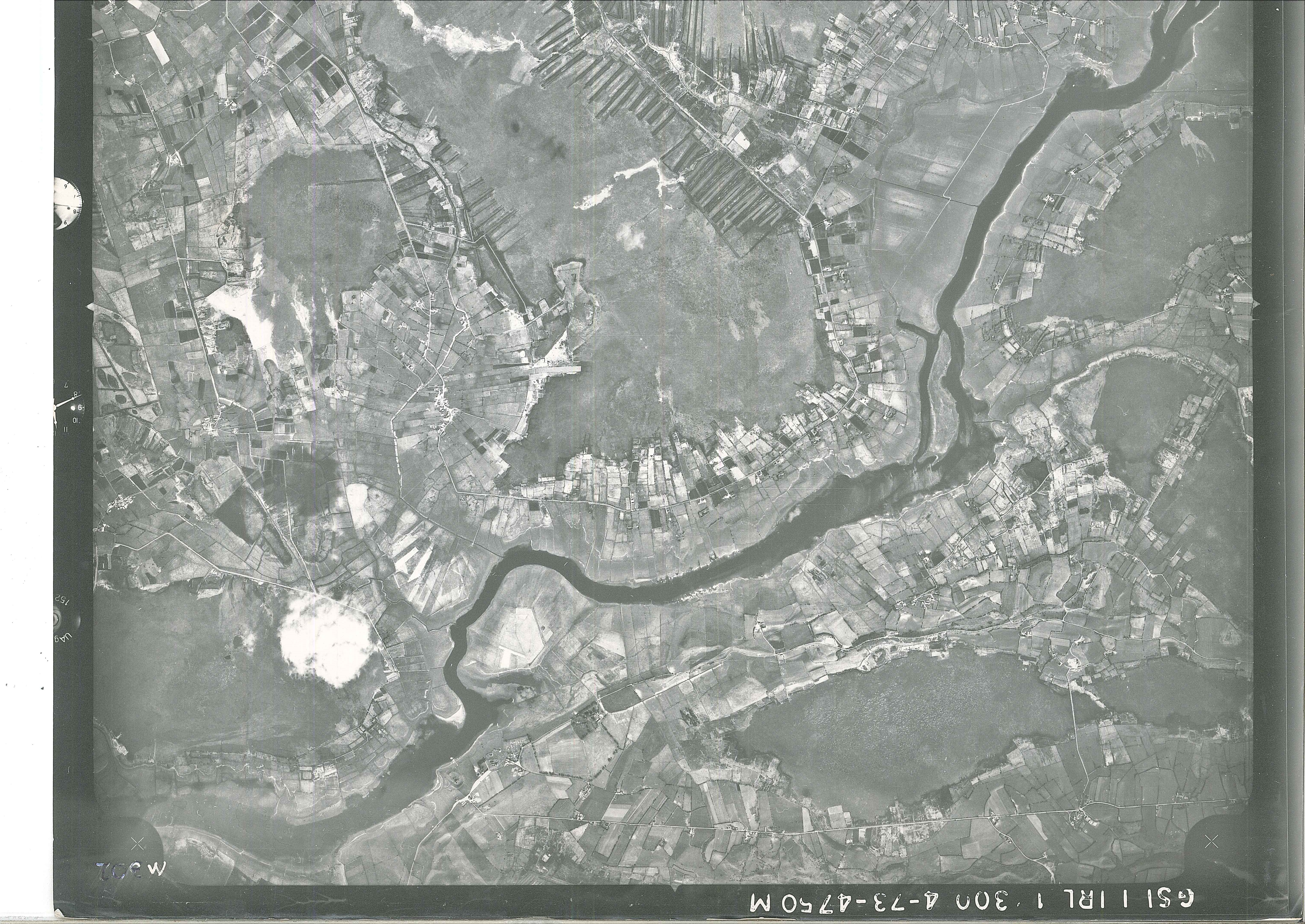
Mongan Bog (bottom right) in the early 1970’s. Pic courtesy of NPWS archives. It’s surrounding Shannonside bogs were largely untouched, with Turbary peat extraction common across the river.

Mongan and surrounds, from Bing Maps 2013. Mechanisation did not impact in the 1970’s but as is evident from this picture, it has had a dramatic impact on the integrity of the Shannonside bogs close to Mongan Bog and Clonmacnoise.


